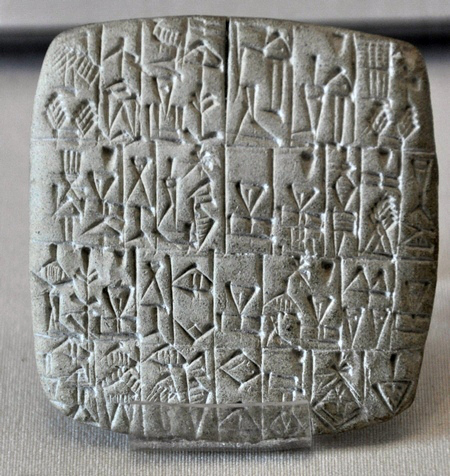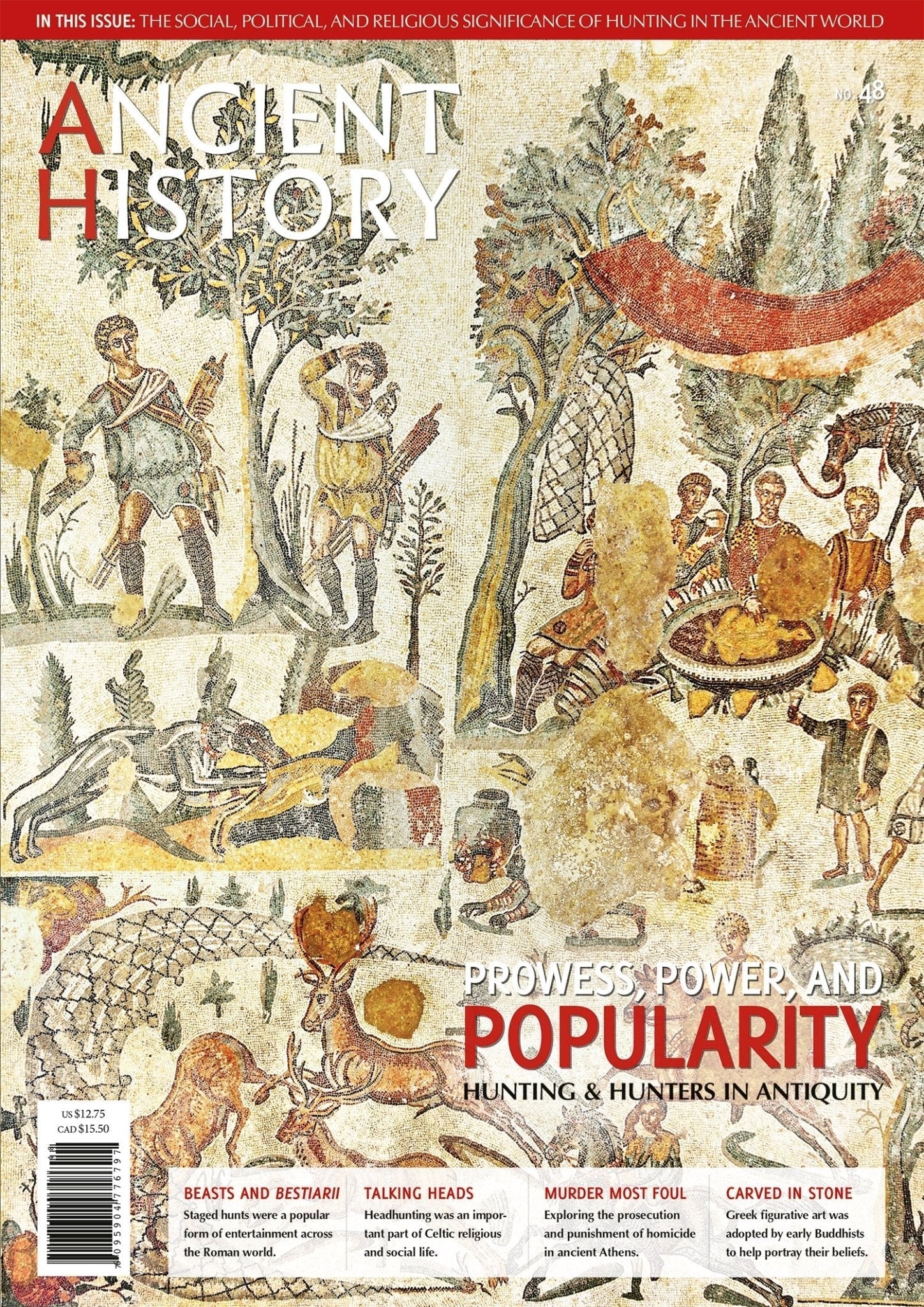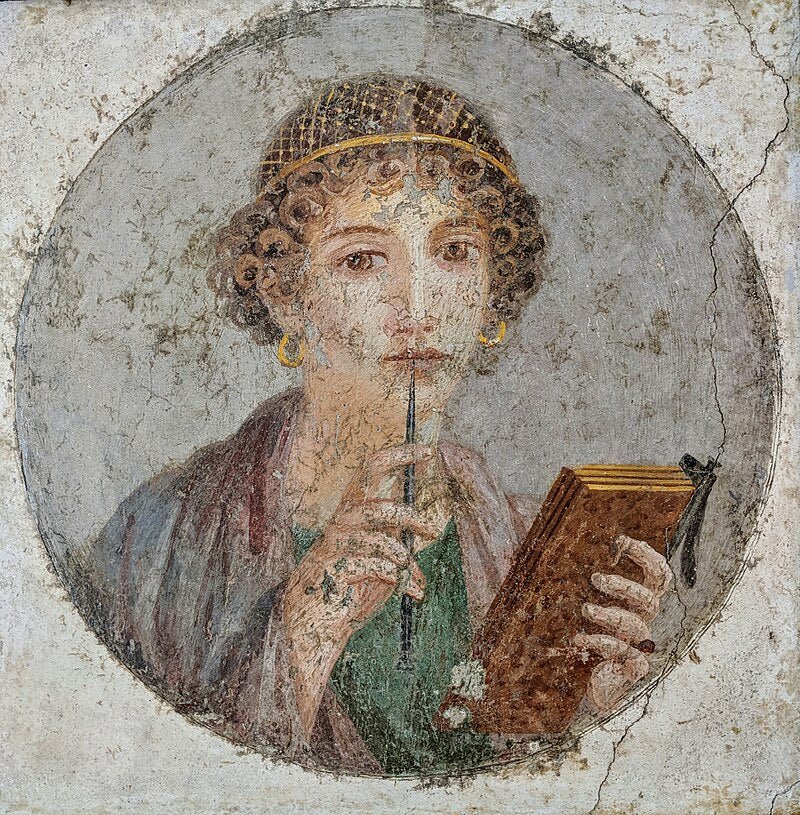A Sumerian contract
In Mesopotamia, Shuruppak was thought to have been one of the oldest cities of the world, founded before the Flood. The archaeological finds there do indeed reach back to long, long ago. The clay tablet depicted below, written in Sumerian and currently on display in the quiet department of the ancient Near East in the Louvre, dates to the twenty-seventh century BC. That was around the same time when the Third Dynasty of Egypt were building the first pyramids. In England, Stonehenge was still constructed out of wood and the people there were just thinking about rebuilding it in stone.

Back to the clay tablet. It contains an administrative text. A house with a surface of about 54 square metres is sold, along with a slave. At the bottom of the text are the witnesses who have to vouch that the sale was done honestly. It would be a while still before people would consider the document itself, supplied with two seals or signatures, would be considered evidence for the agreement: in ancient times, witnesses were still very important.
 The oldest writing still looked a little like a collection of pictograms, in which a star simply represented a star or, perhaps, something that existed in the heavens, such as a deity. ‘Witness’, however, is an abstract term that could not be easily rendered in the form of a pictogram. The image on the right shows that the word was composed out of three separate signs that together mean something like, ‘person who declares things about the land’.
The oldest writing still looked a little like a collection of pictograms, in which a star simply represented a star or, perhaps, something that existed in the heavens, such as a deity. ‘Witness’, however, is an abstract term that could not be easily rendered in the form of a pictogram. The image on the right shows that the word was composed out of three separate signs that together mean something like, ‘person who declares things about the land’.
If you look at the sign for ‘person’, at the right, you might be able to make out something of a body and a head. In the upper left, we see a diamond on its side, which is the symbol for ‘land’. In the bottom left we see a strange symbol meaning ‘word’. It consists of a triangle above a very long upright rectangle, which together represent a face and a beard. The lines that are inscribed from the face downwards, at an angle, represent sounds that are emitted: words, in fact.
Note: this was a translation of a Dutch blog post published on Jona Lendering’s personal website.





1 comment
How did they sign a contract?